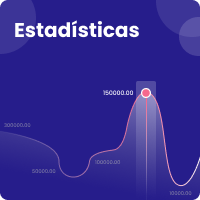Evaluación de desempeño de una red de comunicación RS485+LI-FI
Ejecución de un sistema ciberfísico
Resumen
Como principal objetivo, el presente estudio busca operar un bus industrial mediante luz visible en lugar del espectro electromagnético utilizado por wifi, y así alcanzar velocidades iguales a este o mayores, minimizando el consumo energético y las interferencias electromagnéticas. La investigación pretende determinar el impacto de la integración entre estándar industrial RS485 y la tecnología lifi en la operatividad de un sistema ciberfísico, considerando los parámetros de rendimiento de latencia, capacidad, fiabilidad y consumo energético.
Citas
Apoorv, S., Kumar Bhowmick, S., y Annadevi, E. (2019). Implementation of Li-Fi technology in classrooms. IOP Conference Series: Materials Science and Engineering, p. 590. doi:10.1088/1757-899x/590/1/012044
Bechadergue, B. (2017). Medición de distancia y transmisión de datos entre vehículos mediante faros LED. Universidad Paris-Saclay.
Bhanse, S. P., y Pawar, S. R. (2018). Li + Wi-Fi: The future of internet of things. 2018 3rd International Conference on Communication and Electronics Systems (ICCES). doi:10.1109/cesys.2018.8724051
Gonzaléz, A. F. (2015). Diseño e implementación de un prototipo de comunicación de luz visible (vlc) [Trabajo de grado]. Universidad Piloto de Colombia. http://polux.unipiloto.edu.co:8080/00002492.pdf
Haas, H., Yin, L., Chen, C., Videv, S., Parol, D., Poves, E., Alshaer, H., e Islim, M. S. (2020). Introduction to indoor networking concepts and challenges in Li-Fi. IEEE/OSA Journal of Optical Communications and Networking, 12, A190-A203. https://doi.org/10.1364/JOCN.12.00A190
Işık, M. F., Yartasi, B., y Haboglu, M. R. (2017). Applicability of Li-Fi technology for industrial automation systems. International Journal of Electronics and Electrical Engineering, 5(1) 21-25. http://dx.doi.org/10.18178/ijeee.5.1.21-25
Ito, H., Kodama, S., Muramoto, Y., Furuta, T., Nagatsuma, T., y Ishibashi, T. (2004). High-speed and high-output InP-InGaAs unitraveling-carrier photodiodes. IEEE Journal of Selected Topics in Quantum Electronics, 10(4), 709-727. https://doi.org/10.1109/JSTQE.2004.833883
Khan, L. U. (2017). Visible light communication: Applications, architecture, standardization and research challenges. Digital Communications and Networks, 3(2), 78-88. doi:10.1016/j.dcan.2016.07.004
Lambrechts, W., y Sinha, S. (2019). A theoretical analysis of Li-Fi: A last mile solution. En Last Mile Internet Access. Lecture Notes in Networks and Systems, 77, 109-142. doi:10.1007/978-3-030-20957-5_4
Li, F., You, L., Nie, C., Zhang, Q., Jin, X., Li, H., Gu, X., Huang, Y., y Li, Q. (2017). Quantum dot white light emitting diodes with high scotopic/photopic ratios. Optics Express, 25(18), 21901-21913. https://doi.org/10.1364/oe.25.021901
Swarnkar, M., Bhadoria, R. S., y Arya, K. V. (2018). Architectural building protocols for Li-Fi (Light Fidelity). Emerging Wireless Communication and Network Technologies. 127-137. doi:10.1007/978-981-13-0396-8_7
Wen, C. L. (2017). Telemedicine, eHealth and remote care systems. En Global health informatics: How information technology can change our lives in a globalized world (pp. 168-194). doi:10.1016/B978-0-12-804591-6.00009-4
Zhou, Z., y Kavehrad, M. (2017). Optical wireless applications. En R. Karlicek, C. C. Sun, G. Zissis y R. Ma (Eds.), Handbook of advanced lighting technology (pp. 635-664). Springer. https://doi.org/10.1007/978-3-319-00176-0_34
Descargas











